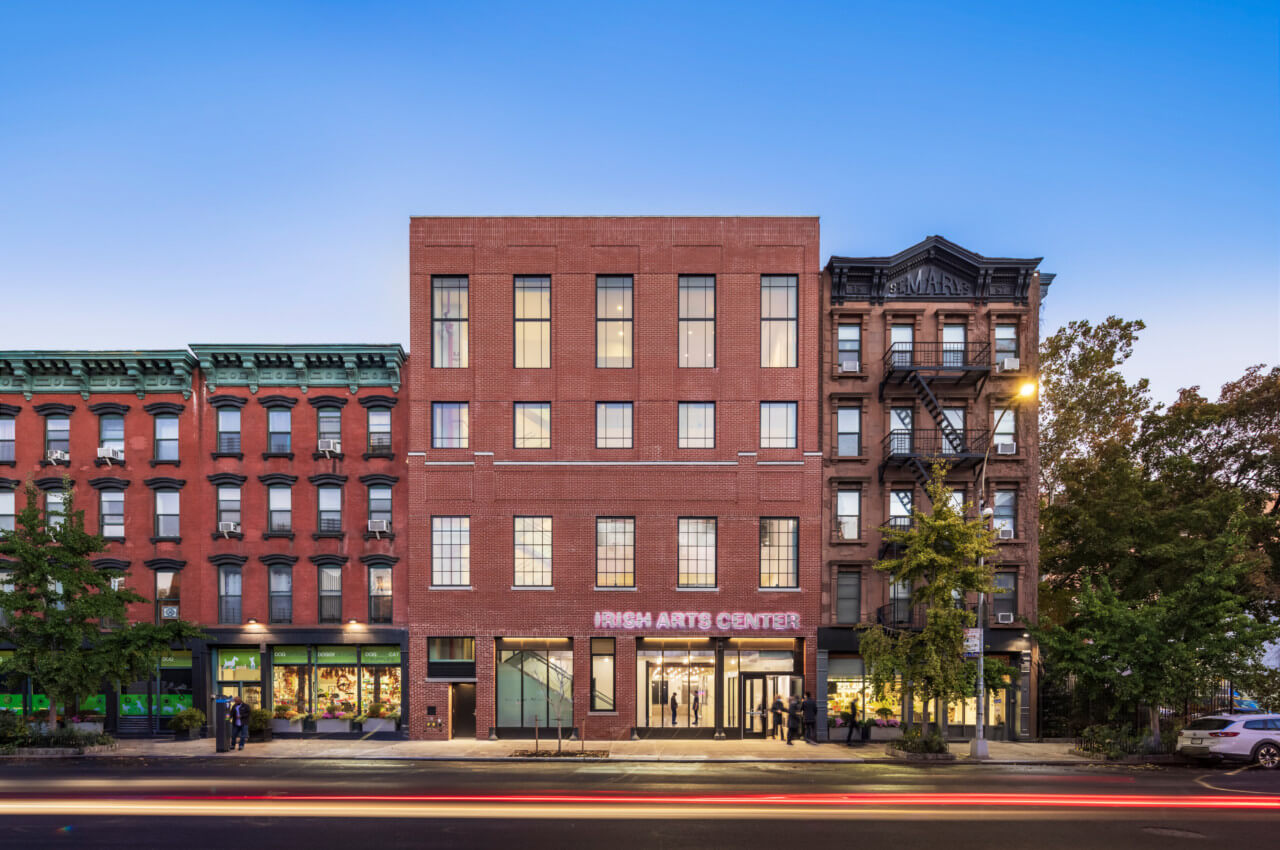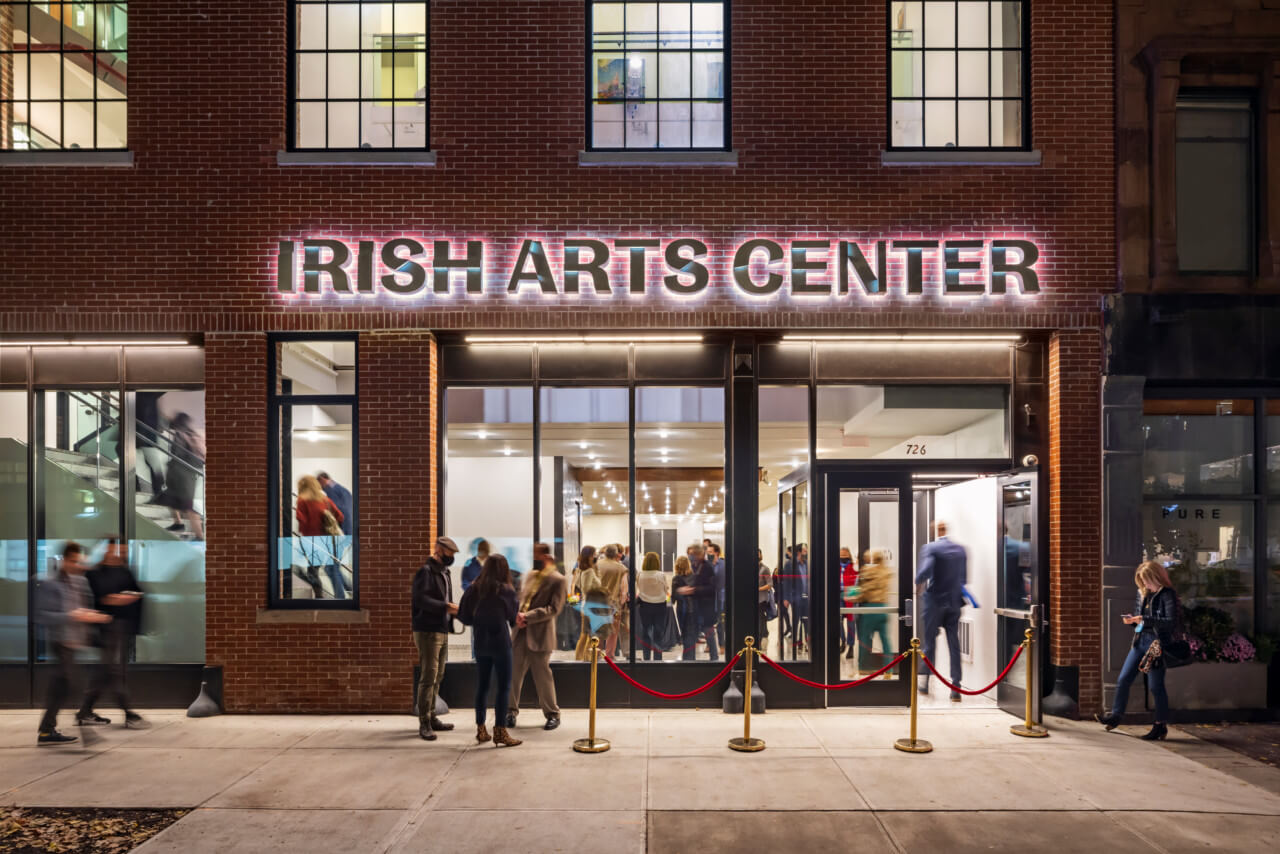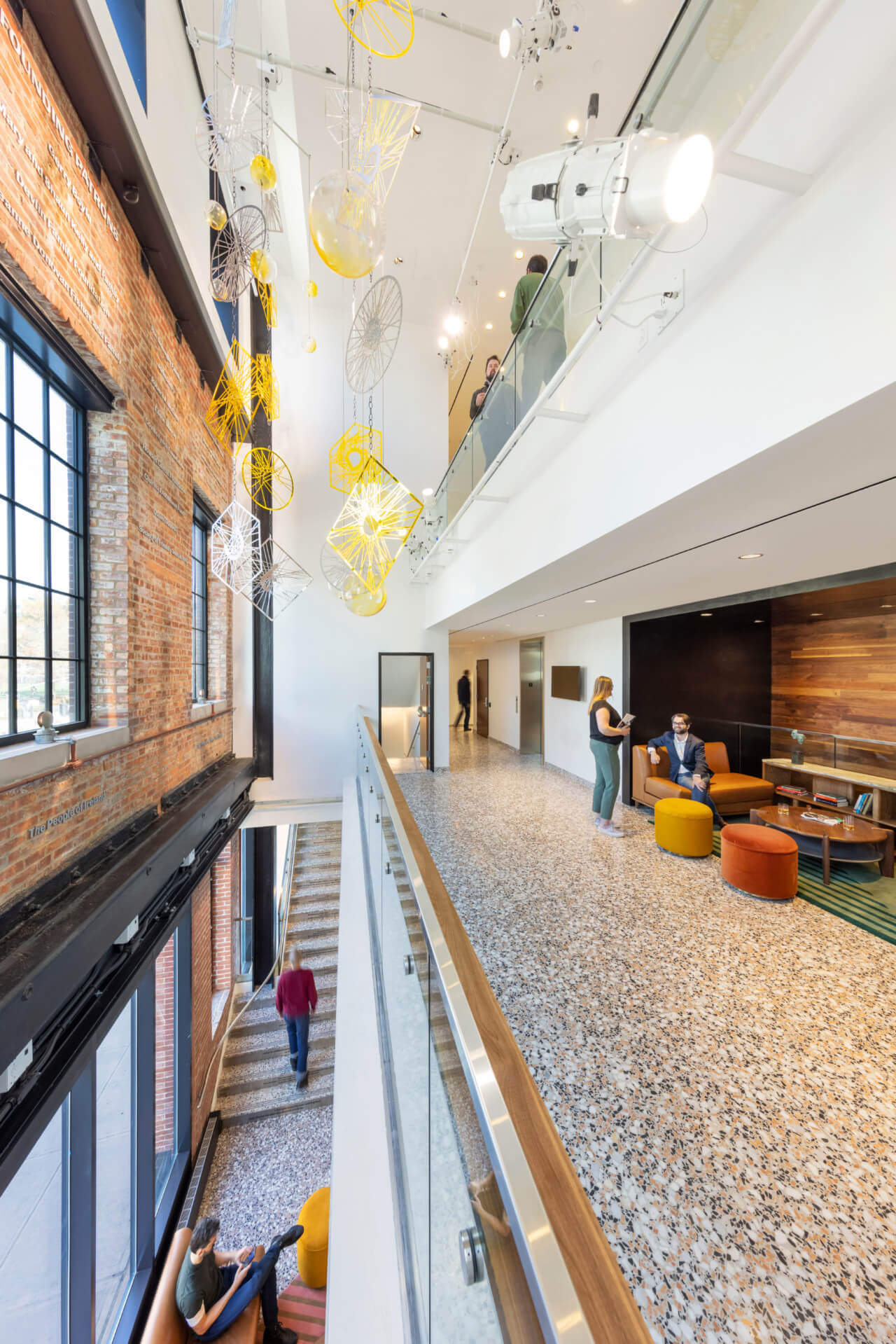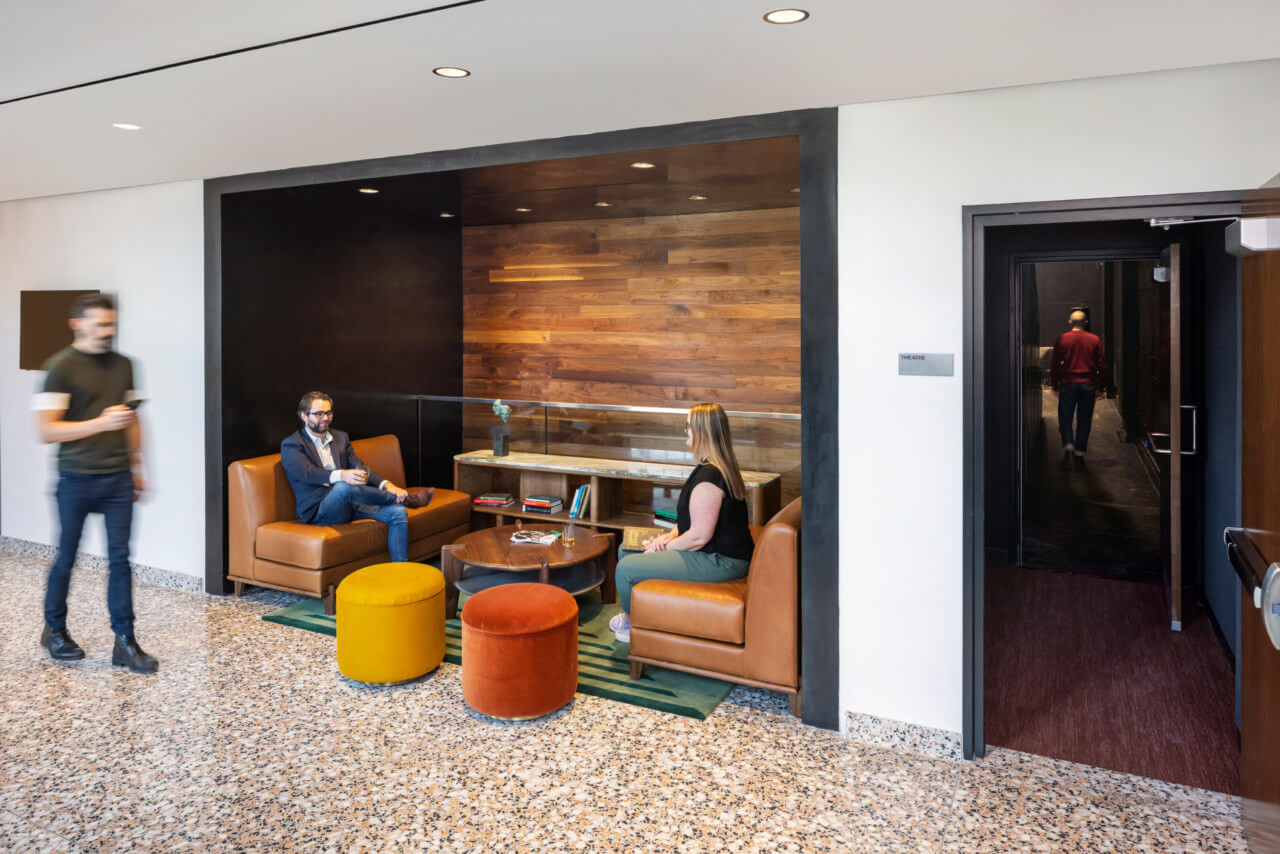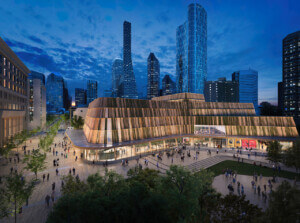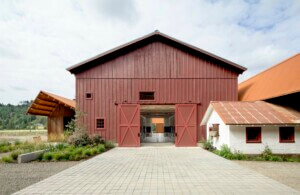It’s been a long, rocky road from conception to the opening of the new home for the Irish Arts Center (IAC) in New York City. The 49-year-old multidisciplinary institution opened its doors to 726 11th Avenue in Hell’s Kitchen on December 8, capping 15 years of development and a construction process marred by the pandemic.
The IAC was given the opportunity to purchase the former Cybert Tire site in 2006 and began a lengthy campaign to not only raise the capital for the new building but to engage stakeholders, artists, and designers on how to build out an inclusive arts space of the future. The nonprofit IAC had previously been headquartered in a three-story former tenement building around the corner on the same block at 553 West 51st Street.
Converting a former tire and auto repair shop into a four-story arts center complete with a flexible theater space, ground-floor cafe, and space for rehearsals, community group meetings, and education, was no small undertaking. New York’s Davis Brody Bond took the lead on the $60 million project with assistance from Ireland’s Office of Public Works to create a canvas for not only the performing arts in New York, but for exploring the Irish diaspora.
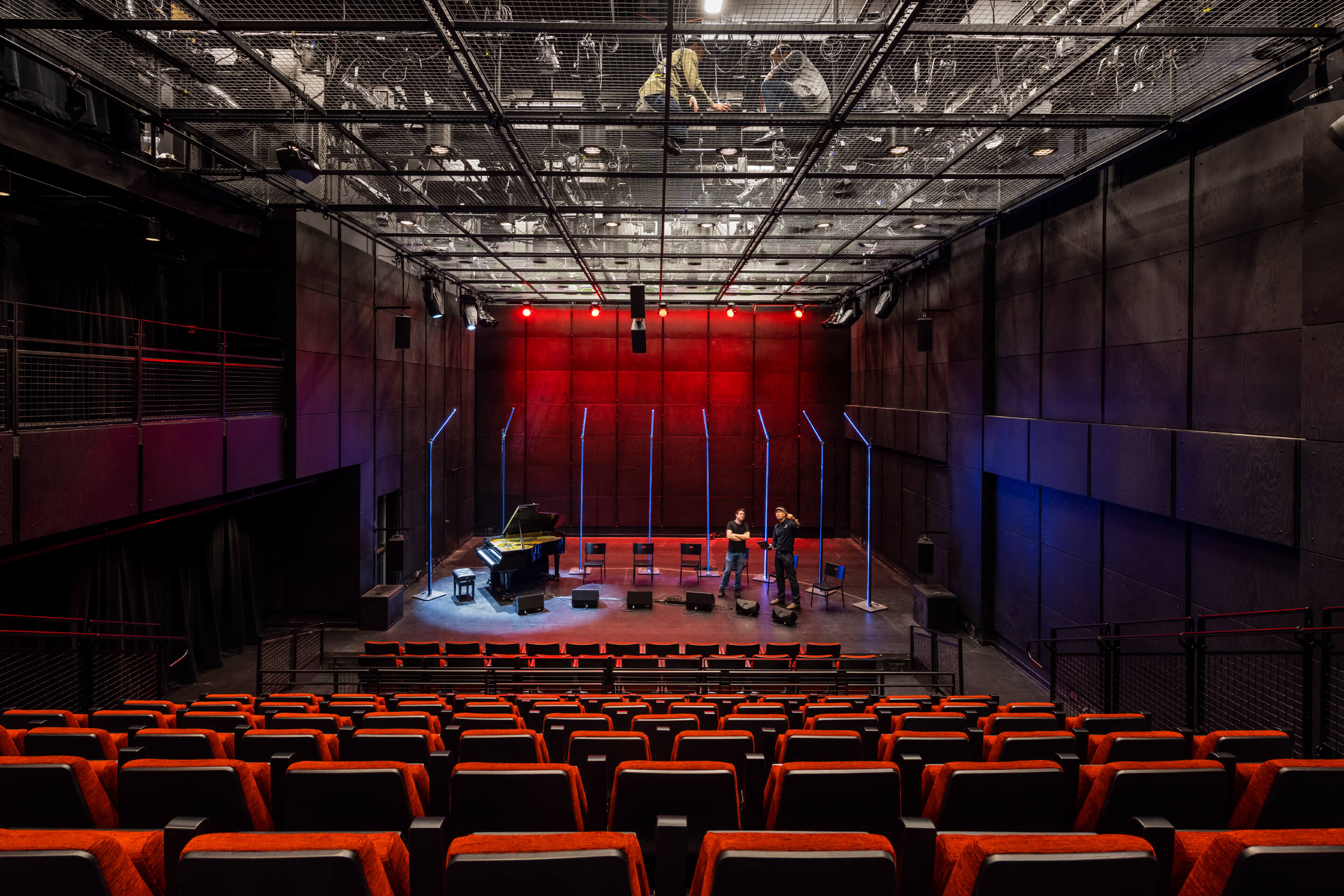
For the building’s centerpiece theater, which boasts 14 different configurations and can seat up to 199 and as little as zero, Davis Brody Bond teamed up with fellow New York theater design firm Fisher Dachs Associates and the Norwalk, Connecticut-based Jaffe Holden Acoustics. That flexibility was required because the IAC intends to use the space to host dance, theater, music, visual arts, and multidisciplinary shows, as well as a special events venue.
“The design and materials of the new Irish Arts Center manifest a deep connection to both New York and Ireland,” said Carl Krebs, an architect at Davis Brody Bond, in the opening announcement. “As architects, we embraced the challenge of preserving and incorporating the original brick facade of a relatively unassuming two-story garage, knowing this would seamlessly knit the new building into an intact streetscape of pre-war buildings. Exposing the garage’s rough construction brick on the interior of the building also reveals a connection to the New York tradition of repurposing industrial spaces as incubators for the arts. But the overall character and disposition of the new building’s spaces draw on essential qualities of Irish culture, with an emphasis on hospitality, intimacy, and social engagement. Altogether, the new building is a perfect physicalization of the Irish Arts Center’s identity and a wonderful new home for world-class arts.”
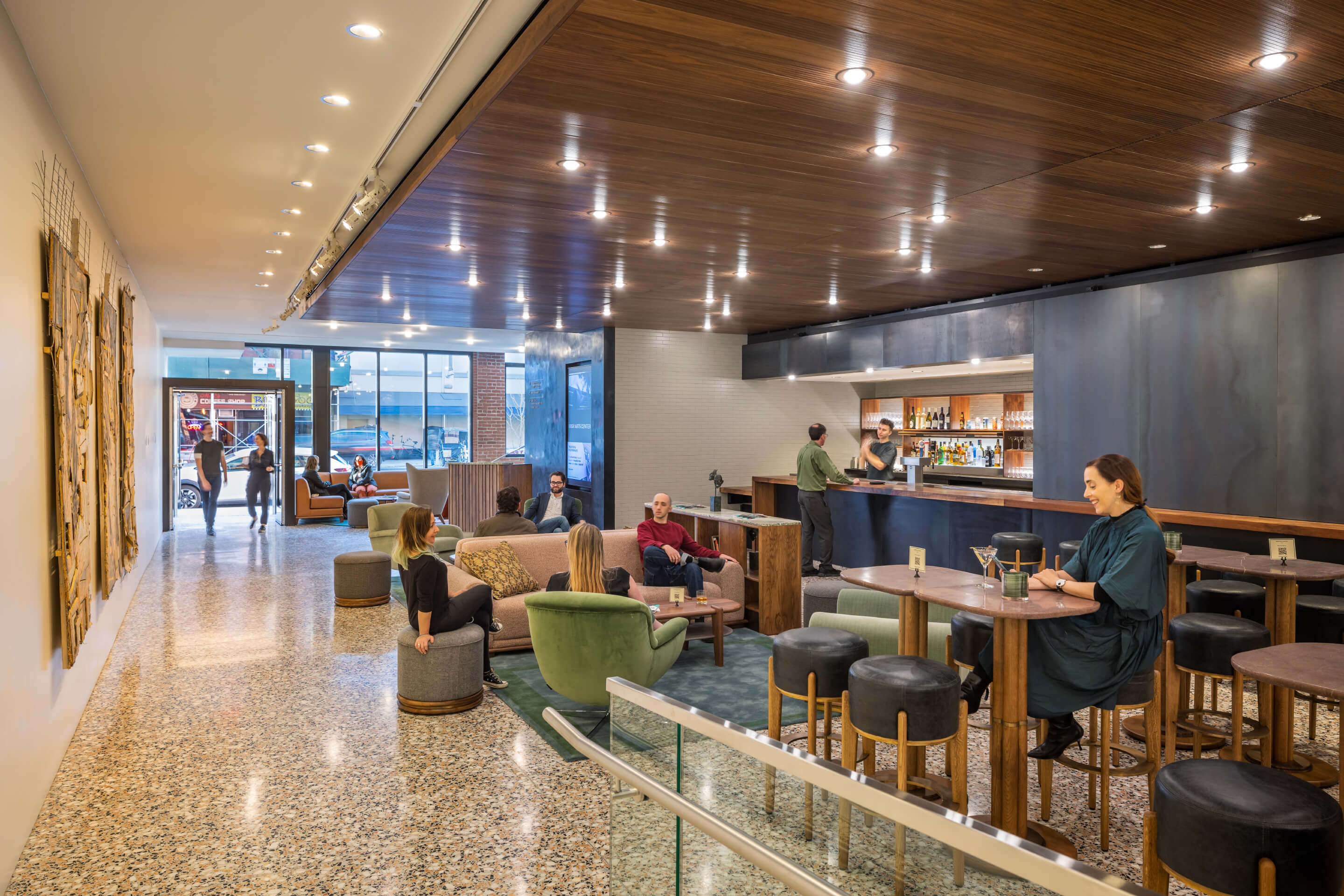
As Krebs elaborated, the 21,700-square-foot arts hub is actually composed of two parts, the original two-story red brick garage and an additional two-story topper that seamlessly extends the facade but crowns the building with double-height windows. Inside, the central circulation runs through a multilevel void and abuts the curtain wall, revealing the original structure’s brick and steel throughout. Visitors entering from the main entrance on 11th Avenue will find a ground-floor lounge and cafe, with contemporary furniture designed and fabricated by Irish brand Orior, including a lengthy bar topper built from a 100-year-old slab of walnut.
Although the IAC began eyeing the site in 2006, building a $60 million headquarters at the time seemed infeasible for a nonprofit with an annual budget of only $690,000. The center’s budget has since grown to $4 million, and the IAC was able to secure $65 million from “City of New York, the State of New York, the Irish Government, cultural and corporate foundations, and hundreds of private donors.”
Construction began in 2020 but was quickly halted by the pandemic alongside most other nonessential projects. Work resumed in July of 2020 and preview performances of the IAC’s first show at its new home, a cabaret revue by Irish-French singer Camille O’Sullivan, Where Are We Now?, began on December 4, complete with a time-lapse of the construction as a backdrop. (The show was originally supposed to run publicly from December 8 through 31 but shuttered early on December 21 due to COVID cases among the production staff.) The IAC will retain its offices in the original building at West 51st Street and plans on renovating the extant 99-seat theater there.
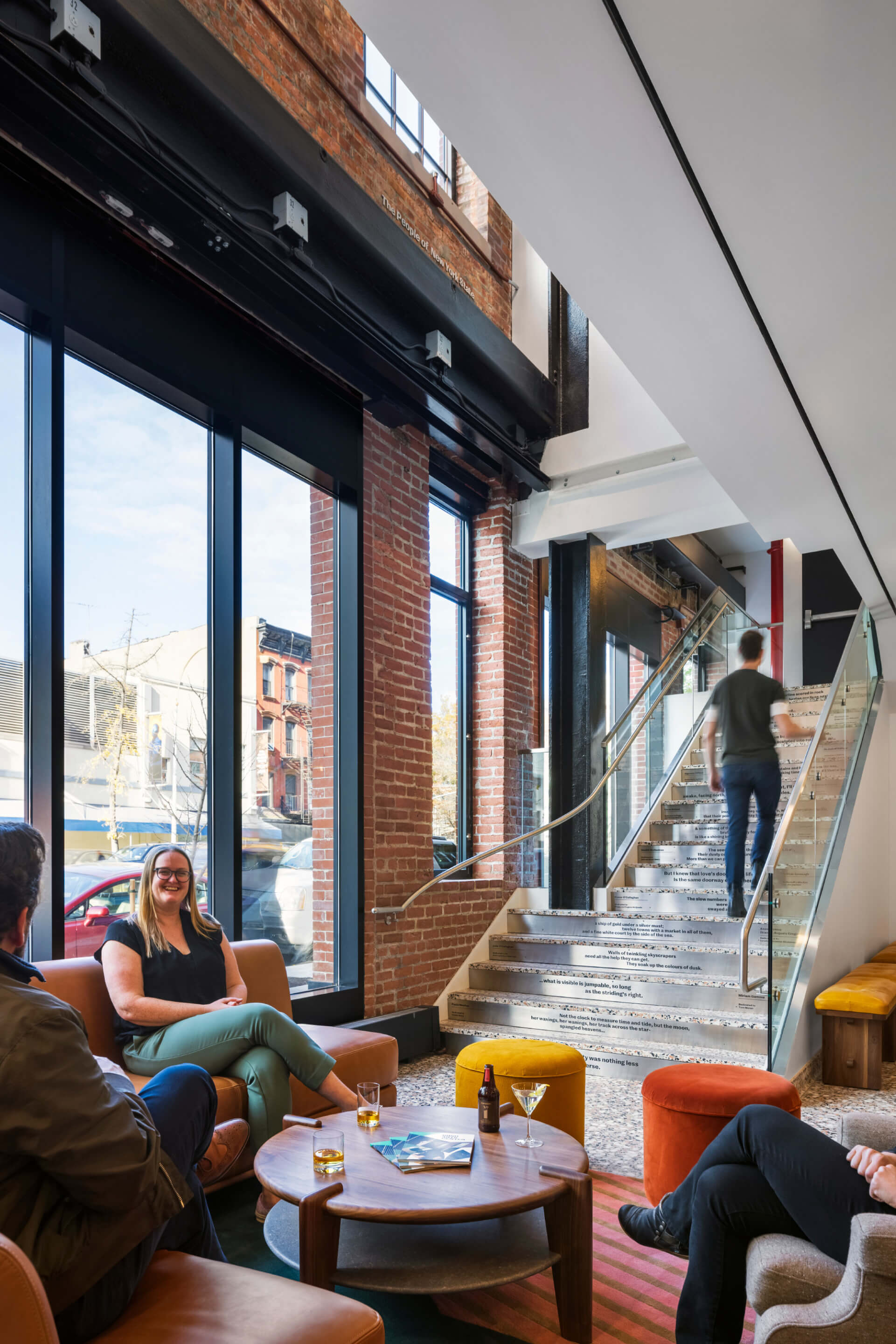
A full list of the inaugural programming can be found on the Irish Arts Center’s website, but the lineup does, as promised, cover a wide breadth of mediums, from literature to dance. Although Where Are We Now? has closed early, The Space We Occupy, a group show from six arts across sculptures, photos, prints, drawings, and paint and plaster, has been spread throughout the interior and will run through May 22, 2022.






